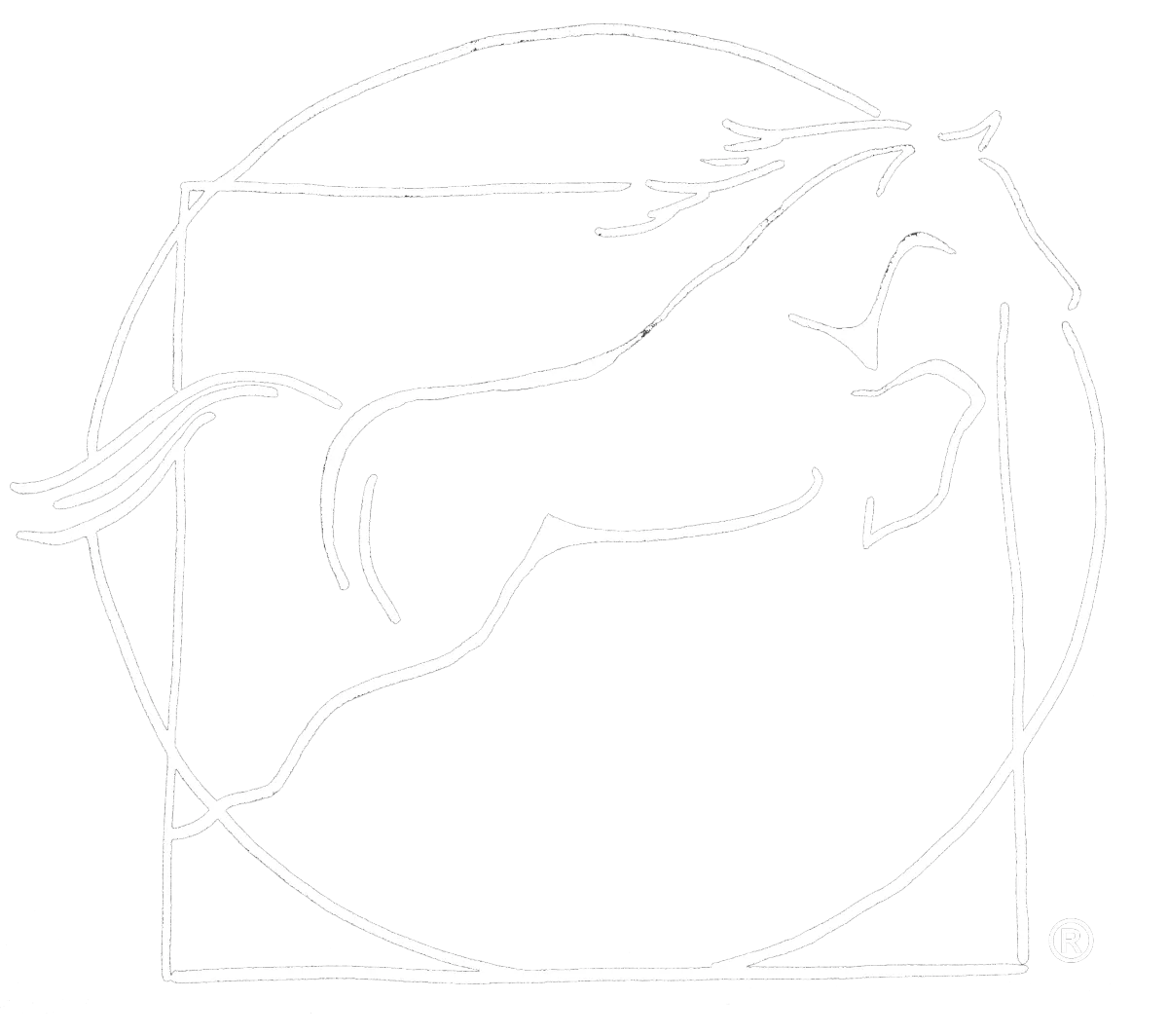"Worm Aneurisms" in the equine Cranial Mesenteric Artery

Illustration: Arteries, Veins, and Nerves of the Pelvic Cavity (p.81 Anatomy of the Horse by Klaus-Dieter Budras, 6th Edition)
"Worm Aneurisms" aka verminous arteritis in horses...
Can they be palpated or positively identified outside of a veterinary diagnostic exam, and do they cause or contribute to a roach-back posture and/or various hind limb lamenesses? I'm not sure, despite what I've read on social media ;) - but here is what I do know, and what I think you should know so you can read critically and be informed as your horses advocate.
Where is the Cranial Mesenteric Artery?
The cranial mesenteric artery is located INSIDE the abdominal cavity, between the spine and the intestines, among the mesentery (the tissue that attach the viscera to the inner abdominal walls) - it does not run along the top of the spine or anywhere near the horses back. Look in any decent equine anatomy book to see this.

FIG 3.45 is from: https://pressbooks.umn.edu/largeanimalanatomy/chapter/abdomen-1/
Can you feel verminous arteritis by palpating a horses back?
When you are palpating a horses back, you are feeling hair, skin, muscle and connective tissue, and finally bone (the vertebral processes and/or ribs, or parts of the pelvis, depending on where you are feeling) NOT the viscera, and certainly not the cranial mesenteric artery (CMA, for the rest of this post).
And even if you could feel an aneurism topically, it requires a rectal ultrasound or a necropsy to positively identify parasite larvae as the cause - so if someone is ‘diagnosing’ your horse without using these tools… you might want to ask how they know? Historically, diagnosing large strongyle larval infections has been very difficult. (Baghdadi et al., 2024)
Strongylus vulgaris aka Large Stronglye Infestation
During their life cycle, Strongylus vulgaris larvae migrate from the intestine to the CMA and back again - not invading the tissues of the back or spine. (Domshy et al., 2024)
CMA obstructions or aneurisms have been observed to cause colic (mild to severe) in equids, and sudden death upon rupture (Borji et al., 2014), but I haven’t read anything conclusive correlating arterial aneurisms to lameness or a roached-back posture, or even inflammation. Have you?
IF CMA aneurisms are present in a horse (an aneurism is a ballooning of the wall of an artery as the tissues are weakened or compromised, which fills with blood), and IF the aneurism is caused by an infestation of worm larvae - DEWORMING THE HORSE WILL NOT CAUSE THE ANEURISM TO DISAPPEAR OR ‘HEAL’ and in many cases will not kill all the worms either.
So do ‘worm aneurisms’ exist?
Yes. And they can be very dangerous to your horse, which is why it's so important to have your horses on an effective de-worming or anti-parasite protocol. We recommend you consult with your veterinarian to make a plan for your horse.
Do 'worm aneurisms' cause horses to have a roached back?
At the time of writing this post, I have not found any published or peer-reviewed studies in support of this claim. Of course, this alone does not mean it isn't true - but my personal and professional experience offers another reasonable explanation...

Could pain or inflammation from a parasite infection cause or contribute to a horse adopting a roached back posture?
Sure - but so can a lot of other things, like habitual muscle contractions of the iliopsoas and other muscles that flex the torso and tuck the pelvis, which creates a chronically camped-under hind limb position, abdominals that present as ‘weak’, makes it difficult for the horse to push off with the hind limbs and also can lead to NPA in the hind hooves (for example).

IF a ‘worm aneurism’ is actually the current cause of equine back pain or causing a recurrent roached back posture, then the pain level and posture would not respond rapidly to gentle Equine Hanna Somatics® exercises that serve to help the horse reset their resting muscle tone back to neutral - without any direct affect on the arteries or worm-count. Similarly, the resultant improvements post-EHS in comfort, posture, movement and well-being would not last - YET we see this happen over and over in our EHS practices.
So correlating ‘worm aneurisms’ to a roached back posture or cause of widespread equine lameness is currently just an unproven theory, and in my experience (based on a lifetimes study of horses and over a decade as a Certified EHS Educator), unlikely.
As your horses advocate, and your own, I ask you:
Please read Facebook posts, blog posts, online articles and content from websites with caution and care. Ask for sources, and look up the citations and the authors to decide for yourself who is a credible resource.
Ask yourself if one persons opinion or experience is enough data for you to believe, or to base your decision-making upon, especially when it's your horses comfort, well-being or life on the line. Even if it's MY opinion that's resonating with you. ;)
Beware the tendency of the masses to blindly follow or agree with their teachers or those they view as ‘professionals’ or ‘gurus…’ - we are seeing a lot of this unfold today, and every day.
Don’t be afraid to stand against the current and ask questions. The best teachers aren't afraid of being challenged, and will be happy to answer OR to admit when they don't know something.
Use your own beautiful brain, trust your intuition, be skeptical, and do your own digging - there is so much information at your fingertips!
And if you want to learn how we reliably help horses who are stuck in a roach-back posture using somatic exercises rooted in basic (proven) neuroscience, I invite you to download our free EBook that will teach you how to guide your horse through 3 gentle Equine Hanna Somatics exercises, or scroll down past the citations to purchase our intro course where you can learn a basic full-body EHS session and how to tailor it to any horse.
Much love and hope this is helpful!
Resources:
Borji H, Moosavi Z, Ahmadi F. Cranial Mesenteric Arterial Obstruction Due To Strongylus vulgaris Larvae in a Donkey (Equus asinus). Iran J Parasitol. 2014 Sep;9(3):441-4. PMID: 25678931; PMCID: PMC4316578. https://pmc.ncbi.nlm.nih.gov/articles/PMC4316578/
Domshy KA, Whitehead AE, Poissant J, Goldsmith DA, Legge C, Knight CG, Zachar EK, Loch SS, Davies JL. A retrospective study of the prevalence in equine postmortems of cranial mesenteric arteritis caused by Strongylus vulgaris in Alberta (2010 to 2022). Can Vet J. 2024 Jun;65(6):587-593. PMID: 38827589; PMCID: PMC11132149. https://pmc.ncbi.nlm.nih.gov/articles/PMC11132149/
Baghdadi, H.B.A., Abdelsalam, M. & Attia, M.M. Diagnostic innovations in Equine Parasitology: a Nanogold-ELISA for sensitive serodiagnosis of migratory strongylus vulgaris larvae infections. BMC Vet Res 20, 579 (2024). https://doi.org/10.1186/s12917-024-04389-x




